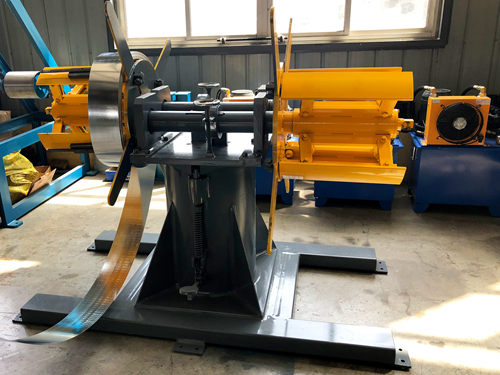Rotary Shear Cut to Length Line An Overview
The rotary shear cut to length line is a highly efficient and advanced piece of machinery used in metal processing industries. As manufacturing processes become increasingly intricate, the demand for high precision and speed has led to innovative solutions such as the rotary shear system. This technology offers a reliable way to cut metal sheets or strips to specified lengths with accuracy and minimal waste.
What is Rotary Shear Cutting?
Rotary shear cutting utilizes rotating blades to shear metal sheets or strips. Different from traditional cutting methods like slitting or shearing, rotary shear cutters are designed to handle continuous coils of material efficiently. As the metal feed enters the cutting zone, two rotary blades move in opposite directions, providing a clean and consistent cut across varying thicknesses and materials. This mechanism not only enhances the cutting speed but also ensures that edges remain smooth and free from burrs, which is essential for downstream processing and maintaining product quality.
Components of a Rotary Shear Cut to Length Line
A typical rotary shear cut to length line comprises several key components
1. Uncoiler The first stage is the uncoiler, where metal coils are loaded and unwound. This component supports heavy coils and facilitates the smooth feeding of material into the cutting line.
2. Leveling System Before cutting, the metal must be leveled to prevent any warping or defects. The leveling system straightens the material, preparing it for precise cuts.
3. Rotary Shear Cutters The heart of the system, these blades are precision-engineered to deliver consistent cuts at high speeds. The design and material of the blades are crucial for longevity and performance.
4. Measurement System An electronic measuring system ensures that each cut is made to exact specifications. This system is typically integrated with a control panel for real-time monitoring and adjustments.
5. Stacker Following cutting, the material is stacked neatly for further processing or packaging. Advanced stackers can automate this process, increasing productivity.

6. Control System Modern rotary shear lines are equipped with sophisticated control systems that allow operators to set parameters, monitor performance, and perform maintenance diagnostics.
Benefits of Rotary Shear Cut to Length Lines
The rotary shear cut to length line offers numerous advantages, making it a preferred choice in various manufacturing settings
- High Speed and Efficiency The rotary shear mechanism allows for rapid processing of materials, significantly reducing lead times.
- Precision The electronic measurement and control systems ensure that cuts are made with high accuracy, minimizing material waste and rework.
- Versatility Rotary shear lines can handle a wide range of materials, including stainless steel, aluminum, and copper, making them suitable for different industries.
- Low Maintenance These systems are designed for durability and require less frequent maintenance compared to traditional cutting methods, which can reduce operational costs.
- Improved Safety With automated processes and enclosed cutting areas, the safety of operators is enhanced, reducing the risk of accidents associated with manual handling.
Conclusion
In conclusion, the rotary shear cut to length line is a significant advancement in the realm of metal processing. By combining speed, precision, and versatility, this technology caters to the evolving demands of modern manufacturing. As industries continue to seek ways to improve efficiency and product quality, the adoption of rotary shear systems is likely to increase, paving the way for more innovative approaches to metal fabrication. Whether in automotive, aerospace, or construction industries, the rotary shear line stands as a testament to the ingenuity of contemporary manufacturing technology.